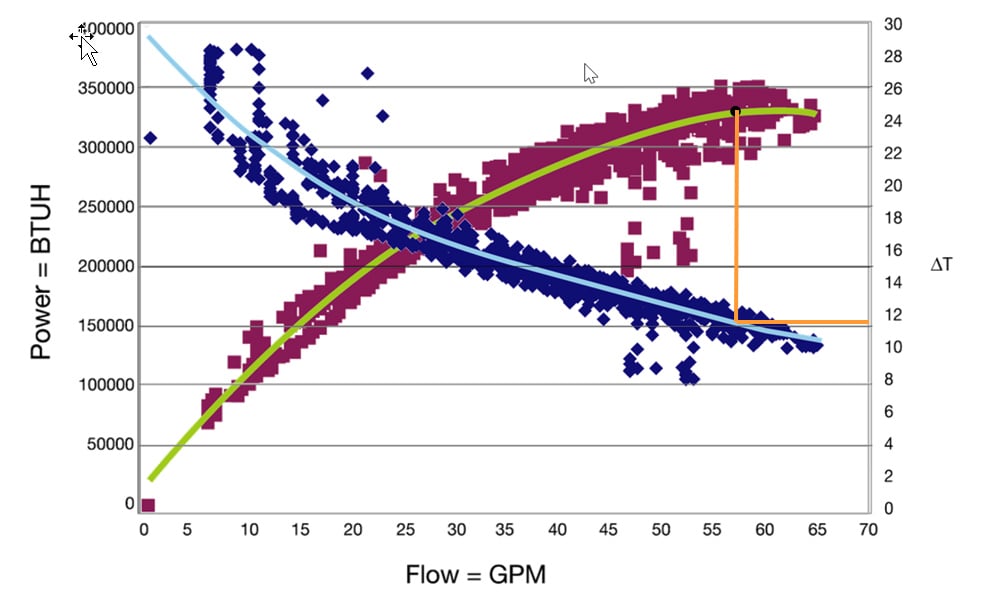How Does the Energy Valve Respond to Low ΔT and a Call for Additional Heat Transfer?
Often asked if the Energy Valve is preventing flow to the coil, how can it maintain the temperature needs of the load? To explore this, let's first examine the Delta T Management function of the Energy Valve. The Delta T Manager monitors the coil ΔT and compares this value with the ΔT setpoint. If the actual ΔT is below the ΔT setpoint, the logic will reduce the flow to bring ΔT back to the setpoint.
Let's stop right here. Are we going to reduce the flow to bring ΔT back to the setpoint? How can the temperature setpoint for the space be maintained if we reduce the flow to the coil?

Let's examine this idea a bit closer. The plot above shows the performance characteristic of a selected cooling coil. The green line represents the average power curve of the coil, while the blue line is the plot of the average differential water temperature through the coil.
Power Output = Q (Btu/h) = 500 * GPM * ΔT
As flow increases, power increases, and differential temperature decreases (and vice-versa). The plot illustrated the flow increases (to the right) ΔT drops. That's how it's supposed to work. However, every coil has a point where additional flow to the coil does not produce extra power (indicated by the dot at the top of the vertical orange line). This is called the power saturation point of the coil.
As flow increases past the power saturation point, the power output remains constant, flow increases, and ΔT decreases.
As a result, more water is pumped; ΔT is reduced, and additional power (or heat transfer) is generated from the coil. A great result: let's answer the question about preventing flow to the coil that will stem from meeting the temperature needs of the load? Or have I?
Why does flow increase beyond the power saturation point of the coil? Simple, the control loop is calling for more cooling. Therefore, the valve continues to open, increasing flow through the coil. However, the power doesn't expand beyond the power saturation point. The sensed temperature is not changing, and cooling is not increasing. Therefore, any flow past the power saturation point does not affect the ability to maintain the perceived temperature.
The ΔT setpoint corresponds to the power saturation point of the coil. When the ΔT falls below the setpoint, the Delta-T Manager will prevent the valve from opening, allowing the flow to occur. Since we know that any flow past the power saturation point of the coil does not result in additional cooling, this flow is wasted energy and does not add to the comfort of the occupants.
